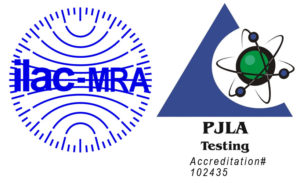Determining the Hydrodynamic Characteristics of Unfixed Human …
Heart Valve Testing
by | SFB 2000 | Publications, Heart Valve Testing
Determining the Hydrodynamic Characteristics of Unfixed Human Heart Valves: Effect of the Properties and Geometry of the Recipient Synthetic Aorta
James C. Conti,1,2 Elaine R Strope,1 Donald J. Rohde,1 Richard Carp,1 Steven Kulan,3
1 Dynatek Dalta Scientific Instruments, Fourth and Main St., Galena, MO 65656 USA
2 Southwest Missouri State University, Dept. of Physics and Astronomy, Springfield, MO USA
3 Springfield Applied Mathmethics
SFB 2000 (Not Accepted)
Introduction:
One of the main goals of engineers and scientists involved in the design of replacement internal components for human use is the replication of biological and mechanical characteristics of the original equipment. It has been shown over the last twenty years that it is not at all straightforward to determine what are the true in vivo characteristics of various organs and components. This can easily be seen by reviewing the enormous amount of questionable literature addressing the simple issue of the radial compliance of arteries. The same problem arises in knowing specifically what the hydrodynamic characteristics of human heart valves are when measured in situ . Problems such as biological variability and the influence of the measuring probes on the data being generated are common. We have attempted to evaluate unfixed human heart valves in vitro by addressing biohazard, mounting, testing, and disposal issues so that we can begin to generate a database on the properties of these valves. One of the primary issues of this evaluation is the determination of the effects of the geometry and mechanical properties of the recipient synthetic aorta into which the excised valve will be sewn.
Purpose:
To establish hydrodynamic characteristics of heart valves so that chemical and mechanical interventional techniques can be evaluated on valves after their baseline properties are determined.
Methods:
Human hearts were obtained from donor that had been tested and certified free of HIV, and hepatitis A, B, and C. These hearts were then bathed in sodium azide and transported to our facilities. Aortic valves were excised and mounted into recipient synthetic aortas that were either straight tubes or bulbed. The bulbed tubing was fabricated from previously published results by Swanson. The aortas were fabricated from either acrylic, latex, or silicone rubber. The valves were subjected to a large array of hydrodynamic testing covering the range of pulse rates and cardiac outputs commonly encountered in heart valve testing.
Results:
The constituent materials and mechanical properties of the recipient synthetic aortas do have an influence on the hydrodynamic properties of the implanted valves. The magnitude of this difference and the determination as to whether or not the substantial increase in effort required to make the more complicated recipient aortas will be reviewed as the amount of available data is increased over the next several months.



